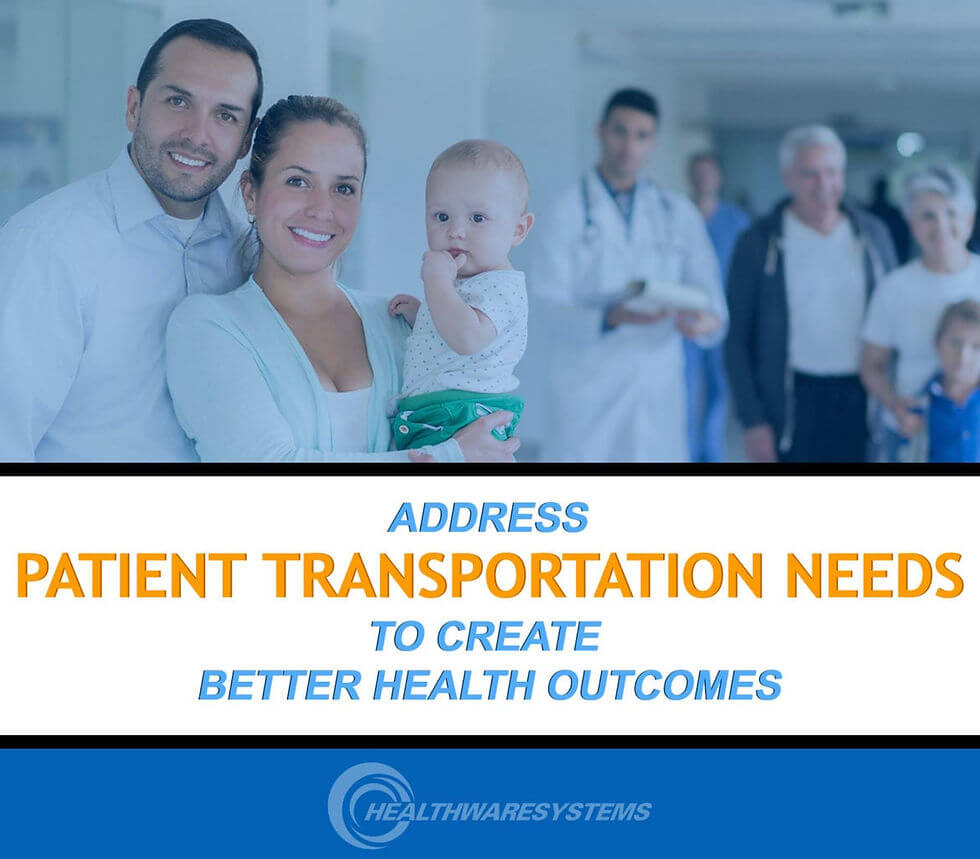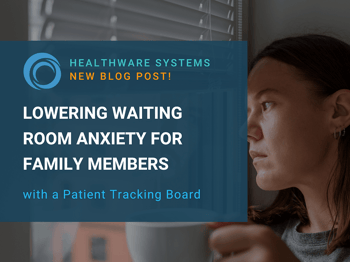Address Patient Transportation Needs to Create Better Health Outcomes
HealthWare Systems Blog
Address Patient Transportation Needs to Create Better Health Outcomes
Posted on Wednesday, April 18, 2018
Patient transportation needs can critically affect access to care and health outcomes; approximately 3.6 million Americans miss or postpone medical care due to transportation issues.
Improved access to transportation benefits patients, health facilities, and communities. Health systems that address patient transportation needs are advocates for their patients, produce better health outcomes, lower readmission rates, reduce no-show appointments, and improve the general health of the community.
Efforts should begin with screening patients to determine their need/eligibility for transportation or other financial assistance.
Here are some specific ways your facility can then help those patients and create better health outcomes:

Educate Patients About Transportation Options
Compile a resource list of patient transportation options available in your area. For example, many senior centers and churches provide free or low-cost transportation and Pace offers a “Call-n-Ride” service in the Chicago suburbs for as little as $2.00. What affordable local transportation options could you suggest to your patients?
Promote patient transportation options through flyers, posters, or digital signage at your facility. If you use a lobby display screen or patient notification board, include notices for patient transportation options that appear throughout your rotation of announcements.
Assign staff members to address patients’ needs, one-on-one. These employees can help patients determine which transportation assistance programs they may be eligible for (e.g. Medicaid non-emergency medical transportation (NEMT), the American Cancer Society’s Road to Recovery program), help them apply or sign up for assistance, and help them understand their existing benefits or coverage (e.g. how ambulance transportation may or may not be covered under Medicare).
Promote patient transportation options through your hospital’s social media accounts.
Create New Patient Transportation Options
Institute a driver volunteer program to provide rides to eligible patients, as Grace Cottage Family Health & Hospital and Green Mountain RSVP have done.
Start a hospital van service, like the one Taylor Regional Hospital created to deliver prescriptions and bring patients to and from the hospital.
Partner with an on-demand transportation service, like Maryland Health System has with Uber and Denver Health has with Lyft, to offer free or discounted transportation to qualifying patients.
Provide shuttle, bus, or taxi travel vouchers. Create an incentive program for eligible patients who keep their appointments.
Participate in local government and community planning projects. The American Hospital Association suggests hospital representatives “participate in local or regional transportation planning initiatives and educate decision-makers about how health can be affected by transportation” to encourage the development of new patient transportation options (such as more walkable routes, bike lanes, bike-sharing programs, bus or shuttle services, etc.).
Alleviate Patient Transportation Needs by Bringing Care to the Patients
Invest in a mobile health center, as Calvert Health System has; the Calvert Health System Mobile Health Center brings primary and preventive health services to patients by visiting churches and community centers.
Create a prescription delivery or mail service, or provide pharmacy services on site to cut travel for patients, as the American Hospital Association advises here (p. 12).
Provide more telehealth opportunities and encourage use of the patient portal for minor questions.
Make a commitment to address patient transportation needs using the suggestions above, and your patients, community, and facility will all enjoy the benefits of better health outcomes.
You can read in further detail how the health systems mentioned above (Grace Cottage, Taylor Regional, Denver Health, and Calvert Health) address patient transportation needs in the case studies provided by the American Hospital Association.
#transportationoptions #addresspatienttransportation #addresspatienttransportationneeds #patienttransportation #patienttransportationoptions #healthoutcomes #betterhealthoutcomes #patienttransportationneeds

